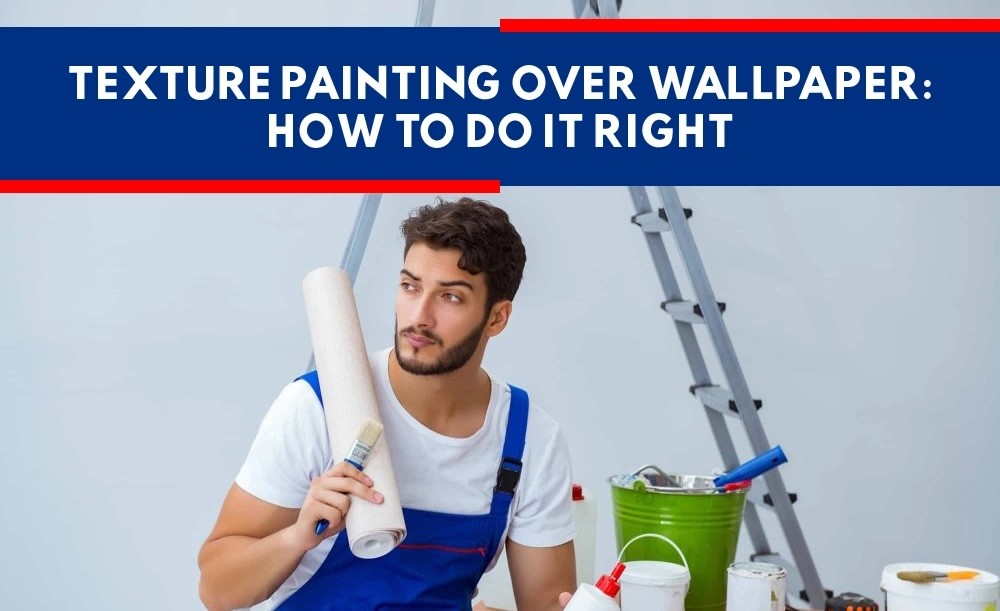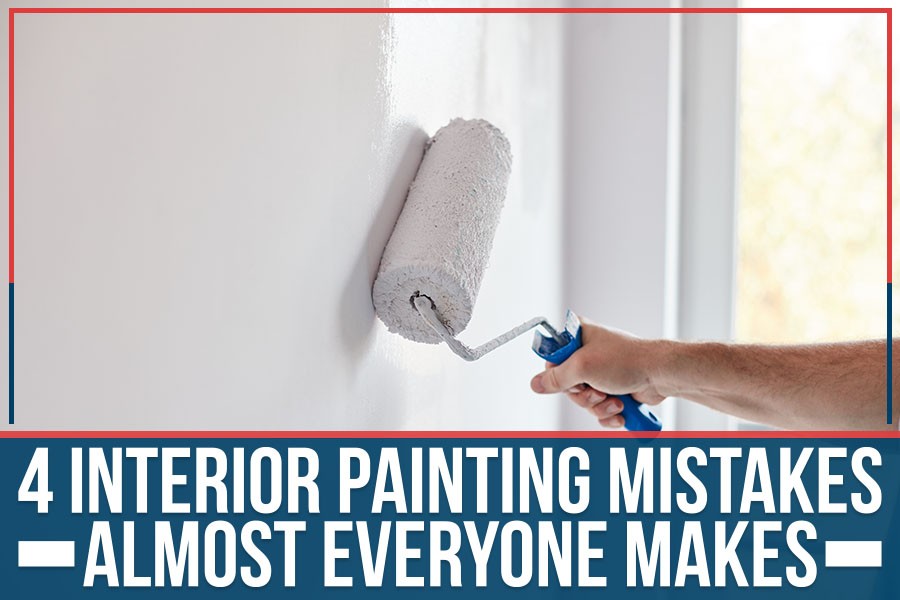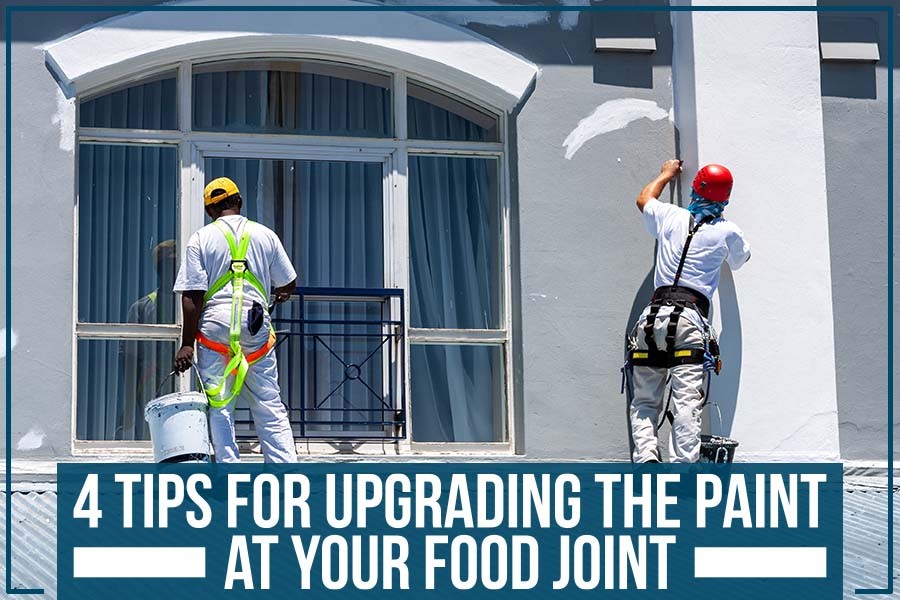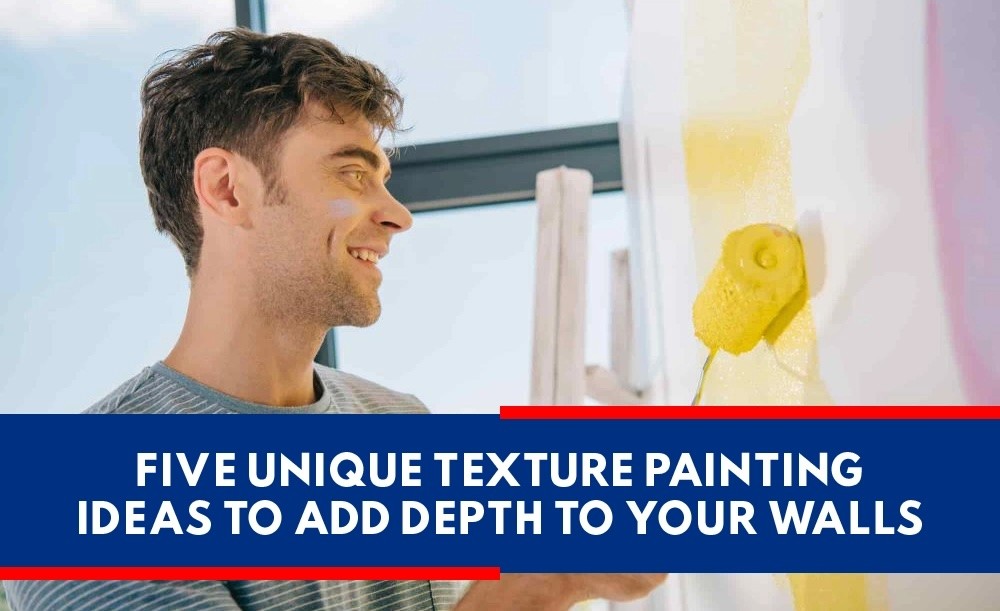4 Interior Painting Mistakes Almost Everyone Makes
Texture Painting Over Wallpaper: How to Do it Right

Table of Contents
Do you have old wallpaper that's making your home look dated? Painting over it may seem like a daunting task, but with the right tools and techniques, you can achieve beautiful results. This article will teach you how to transform your walls from dull and drab to bright and modern by texture painting over wallpaper.
Painting over wallpaper requires more than just slapping on some paint - there are certain steps you must take for the new coat of paint to adhere properly. Without proper preparation, your efforts could be wasted when the paint starts peeling or bubbling within days of application. Fortunately, with this guide, you'll learn all the tips and tricks needed to make sure your project is successful.
Adding texture to wallpaper can be a tricky process, as there are many factors that need to be taken into account. From finding the perfect finish and color palette to making sure no gaps remain between wallboards, you want your end result to be smooth and even. To ensure that your results are up to professional standards, it is best to call in a professional texture painting contractor. With their expertise and experience, they will help you achieve the desired effect while taking away any hassle or worry associated with do-it-yourself projects. So grab those supplies and get ready – let’s start painting!
It may surprise many to learn that nearly one-third of all homeowners in the United States opt for wallpapers as a part of their home decor. But with this comes a challenge – how to paint over wallpaper without ruining it? This task can be daunting, yet if done correctly, texture painting over wallpaper is possible and even enjoyable! Below are tips on identifying the appropriate wallpaper and paint to ensure successful results.
Before beginning a wallpaper project, it is important to make sure you have the right tools and materials. Select special wallpaper glue and textured wallpaper designed for use with latex or acrylic paints to allow for easier removal down the line. Be sure to check the wall to evaluate any existing layers of wallpaper - if there are more than two layers, then remove them before painting. Doing so will ensure that your new textures match the wall texture perfectly for a seamless transition when using paints. Professional results can be achieved by calling in a professional texture painting contractor if desired!
Removing wallpaper can be a challenging task, but one that is necessary when prepping your wall for texture painting. Make sure to use a stripper to help effectively remove wallpaper and wallpaper paste, then fill any noticeable gaps or holes with the joint compound. Apply an oil-based primer to the entire wall surface to protect against moisture getting inside and causing bubbling or peeling later down the line. Finally, choose paints that are made specifically for use over wallpapers - this will help ensure the integrity of both materials while providing excellent covering power. With these steps taken into consideration, you'll be well on your way to achieving great results!
For a successful texture painting result, careful preparation of the wall surface is key. Begin by making sure the wall is free of any dust or dirt, then use an oil-based primer to protect against moisture. Fill in any holes or cracks with joint compound to create a smooth surface before starting to strip the wallpaper from the wallpapered wall. When removing wallpaper takes longer than desired, consider using a wet stripper to help speed up the process and leave behind a perfectly smooth surface for painting. With these steps complete, you'll be ready to start creating unique textures and designs that will transform your space in no time!
Removing outdated wallpaper and stripping away any peeling edges is essential when prepping your wall for texture painting. Start by using a wet stripper to help speed up the wallpaper removal process, then create a smooth surface by applying joint compound to any holes or cracks in the wall. Finally, use an oil-based primer to help protect against moisture from entering and causing any future peeling. With these steps complete, you'll be ready to start creating unique textures and designs that will transform your space!
Before you begin applying the primer, it's important to decide on the best type for your wall. If you’re painting over wallpaper, an oil-based or shellac-based primer is recommended as these will provide adequate coverage and protection against moisture. For plaster walls that aren't covered by any kind of paper or fabric, a latex primer should suffice.
Regardless of which type of primer you choose, make sure to apply at least one good coat evenly across the entire surface. This will help ensure that the paint adheres properly when applied later on. Once this coat has dried completely, use sandpaper to lightly sand down any uneven areas to create a smoother texture before continuing with your project.
At this stage, you're now ready to start adding color and texture to your walls! The next step involves blending new textures with existing ones to achieve a truly unique look – something we'll explore more thoroughly in our upcoming section.
Now that you've primed and smoothed out the surfaces, it's time to get creative! To blend new textures with existing ones, start by dipping an angled brush into some oil-based paint. Then stroke in a random pattern across the walls, allowing your hand to move freely as if you were painting on canvas. This will create abstract patterns of color that contrast beautifully against any textured wallpaper underneath.
Once you're satisfied with these initial strokes, take a step back and assess whether they are even in tone or require further blending. If needed, use rags or towels to dab at certain areas until you achieve the desired effect. Additionally, try experimenting with different colors of paint so you can see how they interact and change when mixed – this could be just what your space needs to look truly unique!
By adding layers of texture through subtle details like this, you'll be able to transform plain walls into something much more interesting and visually appealing. With a little bit of imagination and creativity, every room can become its work of art!
Painting over wallpaper can be a rewarding DIY project if done correctly. Here are the steps to ensure successful results:
Prepare the walls by dulling any glossy surface and patching up holes or cracks with spackle. Then, make sure to use wallpaper adhesive for secure coverage on uneven surfaces.
Gather your supplies – this includes drop cloths, paint brushes, roller covers, sandpaper, primer, sealer, and of course oil-based paints in various colors.
Paint away! Begin by coating the entire wall with a base color and letting it dry before adding additional layers of texture through brush strokes and patterns. After the painting is complete, don’t forget to clean up properly so that you have no mess left behind.
Whether you're tackling small projects around the house or taking on more ambitious painting endeavors - following these steps will help create stunning results that last for years to come. From prepping the walls to selecting the right materials and tools; each step plays an important role when it comes to achieving beautiful outcomes from your painting projects.
The finishing touches are essential for a successful painting project. With the right tools and techniques, you can make your walls look new again! Here's what to consider when finalizing your work:
First, use a quality painting roller or brush with thick bristles for even coverage of paint, as well as a putty knife for smoothing out any bumps in the wall. Additionally, using a dry sponge is an effective way to remove excess primer or sealer if needed.
Second, choose paints that are appropriate for the surface being painted on—whether it’s wallpaper, wood paneling, or something else entirely. Pay attention to details such as color saturation and sheen so that everything looks uniform once finished.
Finally, take care when cleaning up after yourself. Make sure all supplies are properly stored away after each use and dispose of used materials according to local regulations. With these tips in mind, you'll be able to create beautiful results for your next painting project!
Author

Mason Marquis, raised in Newport Beach, California, and Austin, Texas, amalgamated his experiences from both vibrant cities in his journey. His academic pursuit in Economics and Psychology at the University of North Texas (UNT) led to the founding of Spray Tex Painting. This venture was not just a business for Mason but a practical application of his academic learnings, particularly the integration of economic concepts and psychological understanding. Spray Tex Painting, under Mason's direction, transcends being merely a painting service; it's a platform where client visions are realized through dedication and creativity.
Related Articles

4 Interior Painting Mistakes Almost Everyone Makes

4 Tips For Upgrading The Paint At Your Food Joint

5 Unique Texture Painting Ideas to Add Depth to Your Walls

A Comprehensive Approach: Unveiling the Whole-house Paint Services